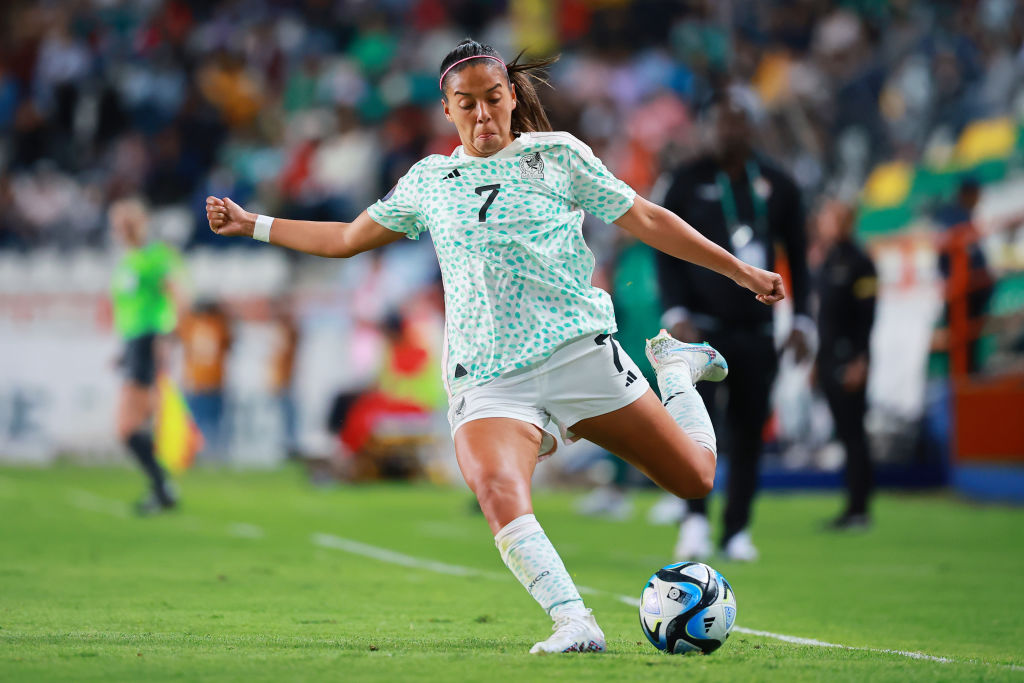Spinning really fast on one hand isn’t just a way to kill time anymore.
From the streets of New York to the biggest stage in sports, breaking (also known as breakdancing) has officially become one of the medal events for the Summer Olympics. Heart and soul is returning to the global stage.
The iconic art form will be debuting during the 2024 Paris Olympic Games and will run from Friday, Aug. 9 through Saturday, Aug. 10.
The Games will have two gold medals at stake – one for men, or b-boys, and one for women, or b-girls. Judged on fundamentals, originality and musicality, there will be 16 men and 16 women battling one-on-one to determine who will take home the gold for the first time in history.
Get San Diego local news, weather forecasts, sports and lifestyle stories to your inbox. Sign up for NBC San Diego newsletters.
With its first time debuting as a sport on a global scale, breaking is about to become even more of a national phenomenon.
Let’s take a deeper look into the sport’s history and what we can expect for the 2024 Games:
What is breaking?
SportsWrap
The top sports headlines of the day
Breaking, commonly referred to as breakdancing, and also referred to as b-boying/b-girling, is an athletic style of street dance. It originates from the African American and Puerto Rican communities in the United States.
Breaking is versatile and pretty ambiguous in its essence, but the dance usually comes down to four main movements: toprock, downrock, power moves and freezes.
The dance sport usually coincides with songs featuring drum breaks, especially in genres like hip-hop, funk and soul.
The cultural and athletic phenomenon hoists competitors in their use of an arsenal of sports and swag to see who has the best moves.
In competitive atmospheres, two individuals will battle one-on-one on a stage or dance floor, almost resembling wrestling or boxing.
What is the proper terminology: breakdancing or breaking?
First and foremost, it should be very clearly stated that breaking is the proper name used to describe the sport, not breakdancing. Though some argue it is the same thing, the breaking community prefers the sport’s true name.
Another important note is that athletes in the breaking community do not like to be called breakdancers. Instead, they are called b-girls and b-boys, short for break-boys and break-girls.
“As b-boys and b-girls worldwide, we all know that our terminology is not breakdancing, it’s breaking, and the people that do it are b-boys and b-girls,” said Rox Rite, a professional b-boy from Windsor, California.
“Spread the word. We have to use this time to share the right history, that way we’re not on the wrong side of history.”
History of breaking: Where did the sport begin?
The newest of Summer Olympic sports began its journey in the heart of the South Bronx. That’s right – the USA birthed breaking, and it is proud to say so.
Some of the first pioneers of the artform-sport mixture were Trixie (Lauree Myers), RIP Wallace D, Dancing Doug (Douglas Colon), A1 Bboy Sasa, DJ Clark Kent (Tyrone Smith), The Zulu Kings and Cholly Rock (Anthony G. Horne), Darlene Rivers, The Legendary Smith Twins and more.
The original hip-hop dance represented street culture back in the 1970s, and today, this dance culture has transitioned into a sport being presented on the grandest global stages. It’s growth in its simplest form.
And yet, those who compete on the biggest stages still come back to their local venues to tear up the dance floor -- because that’s what it’s all about.
“This is our chance to really come together as a community and lead it to future generations to benefit from,” said Rite.
After all, breaking was created with the intentions of sheer fun and using hip-hop as a tool to make people’s lives better.
When was breaking officially approved for the 2024 Paris Olympics sports program?
The IOC announced official inclusion of the sport on Dec. 7, 2021 in Geneva, Switzerland.
Why did the IOC introduce breaking to the 2024 Games?
It’s simple – the Games are seeking a younger audience and dancing is the perfect way to do it.
But even more so, this new dance-style sport opens a plethora of opportunities to those who are massively skilled, yet have not been seen because of the stigma that breaking is not a sport. Now b-boys and b-girls can strut their stuff for the entire world to see.
What does the breaking community think about their inclusion in the Games?
Omar Delgado Macias, more famously known as Rox Rite, is a b-boy from California, who is very excited about breaking’s inclusion in the 2024 Olympics.
Rite calls it “big news” for the worldwide breaking community, and something most b-boys and b-girls never thought they would see in their lifetime.
Putting breaking on the global Olympic stage will create extensive opportunities to show the sport in a new light.
“It’s not an end all, be all, but it’s a new platform to reach people and share what we’ve been doing with the world for the last 40 years,” said Rite in a personal YouTube video describing the new sport’s addition to the Paris 2024 Olympic program.
The 40-year-old dancer has won 100 titles, including the UK B-Boy Championships, R16, Red Bull BC One and Freestyle Session.
Why is breaking so controversial?
Despite the IOC’s endorsement of breaking, people are still convinced that breaking isn’t a sport.
“It’s sort of making a mockery of what the Olympics is,” said Australian squash player Michelle Martin. In an interview with the Guardian, Martin describes her frustration as she has lobbied for squash to be included for years.
It’s important to note that many sports have an artistic aspect weaved into the competition. Think about gymnastics, synchronized swimming, equestrian dressage and figure skating – all these sports incorporate athletics and art, usually paired with music, to exhibit some of the best creativity the world has to offer.
That’s what breaking is for.
Nonetheless, “with the [IOC] announcement, in a lot of the new media sources that released the news about breaking becoming an Olympic sport, there were a lot of ignorant comments about a craft that has really stood the test of society’s pop culture demands,” said Rite.
Rite shared his frustrations on Americans who call themselves “hip-hop heads,” saying that breaking is the original hip-hop dance that represents the street culture that comes within this nation.
“This dance was created in the Bronx, N.Y., here in the United States, and in most of the pages I saw, it was a lot of Americans or hip-hop heads speaking down on breaking,” added Rite.
The verdict? Breaking is absolutely a sport, but also an art. It’s the perfect cocktail of culture.
Breaking is an expression of dance, music, fashion and movement and yet it is presented in a sporting-event-type environment. Both worlds, sport and art, must coexist in order for the sport to be performed at its true caliber.
And whether you consider it a sport or a dance, modern breakdancing is a multi-million dollar business with an estimated 30 million practitioners, big sponsors and grand venues looking for top-tier talent.
It’s safe to say, the stakes are high.
What is the most challenging part about breaking’s debut at the 2024 Olympics for B-boys and B-girls?
The 100-title winning b-boy Rite explains that the most challenging part of all of this is not within the breaking community itself, but rather the external factors that come with the sport’s inclusion on such a global scale.
For instance, people who claim breaking is a dance rather than a sport.
“Our next thing is for us to go and educate the world because they’re not necessarily against us but it is our job as practitioners and people that have been there in this lifestyle to continue to push forward and educate the world on this dance through this platform,” added Rite.
Another fear of many b-boys and b-girls is the risk of losing the cultural aspect of breaking. Original lovers of underground hip-hop are worried about the art and culture of the pastime being appropriated once the sport hits global Olympic stages.
Who should we look out for at the 2024 Paris Games?
The top dance crew in South Korea, Jinjo Crew, seem to be confident in taking home their country’s first breaking medal.
“I’d say we have a 50 percent chance of bringing home gold,” said the founder and CEO of Jinjo Crew Kim Heon-jun in an interview with Arirang News. “Those are great odds.”
According to BBOYRANKINGZ, Jinjo Crew holds World No. 3 in the top five groups for breaking with 3450 points.
The Republic of Korea sits at the World No. 2 spot for the top five countries in breaking with 3134 points.
The World No. 1 spot is currently the United States with 3217 points, while Japan holds No. 3 with 2982 points. Canada claims the World No. 4 spot with 2977 points and The Russian Federation holds No. 5 with 2966 points.



